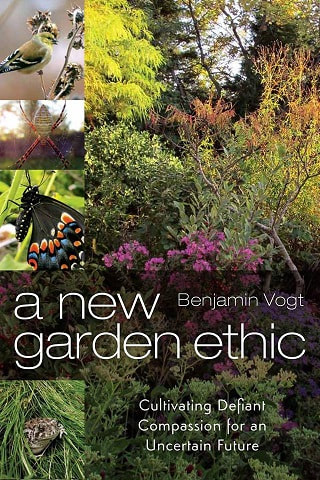Undoubtedly, you’ve seen the articles about monarch butterfly populations dropping and the insect apocalypse, and maybe you’ve added more blooms to whatever small spit of land you have. While the issues we face are much larger than what’s happening in our urban and suburban gardens, the insect die off starts with the cultural mentality of human supremacism made evident just on your drive to work or the grocery store.
Every city looks pretty much the same. We start our day in homes where lawn makes up the vast majority of landscaping, then make our way past businesses and schools and churches where lawn makes up the vast majority of landscaping. And snug tight against the walls of most structures is a thin line of defense — scattered shrubs and a few flowers marooned in unnatural oceans of wood mulch. If you were a pollinator all of this habitat would be useless. It fact, it’d be lethal — there’s almost no source of food or a place to raise your young.
Humans are superb colonizers — we’ve made urban landscapes efficient for our uses. But we’ve left out the nature that pollinators need, and without pollinators we’d soon find ourselves without blueberries, squash, melons, apples, oranges, strawberries, almonds, and a seemingly unending list of food. We’d also find ourselves without many flowers we enjoy in parks or right out the front door.
The case of bees is only one example of tens of thousands of insects that invisibly swarm our world. We know of monarchs — how they require milkweed since their caterpillars can only eat this one plant. As farm fields have grown and as prairie has been plowed away, milkweed and the grassland habitat monarchs and a plethora of other insects rely on has helped clean up our windshields but also starved the environment. Just take songbirds. While their young are in the nest for roughly two weeks the parents are feeding the chicks a steady diet of spiders, beetles, moths, butterflies, bees, caterpillars, and more. Some bird species may require hundreds of insects a day while they are growing up. If you haven’t noticed, our cities are becoming quieter — the spring songs once so loud and diverse just a decade or two ago have become muted and more subtle.
In my neighborhood front yards are small and most families kick a ball around in the back, so that front lawn goes unused. Every week someone mows it down, making sure not a dandelion blooms or a milkweed takes root. What if we took even half of these small spaces and made our garden beds twice as large? What if we had drifts of short meadow flowers and grasses? What if instead of street after street of monochrome flat green, we created networks of wildlife refuges, islands of habitat and freeways of food and shelter? Our smallest native bees can travel only a few blocks before needing to refuel on nectar — and where can they find it when the landscape is lawn or hosta or wood mulch?
If we can’t provide for the nature that literally sustains us at home, how can we ever hope to steward that nature beyond our front door into parks and farm fields and marshes and deserts and forests and prairies? Our urban gardens matter — maybe not because they can prevent an “insectageddon,” but because our gardens reflect what we think of our natural world and how we see ourselves either as a part of the wild web, or as a near-sighted species who lacks compassion for the smallest among us.
My son is six months old and every day I think about the world I’m giving to him. While he’s smiling at me, rattle in hand, I’m apologizing to him in words he can’t yet understand but that, unfortunately, he will one day comprehend in more ways than my heart can bear. But soon enough we’ll walk the garden and identify as many insects as we can, learning about the plants they need for pollen or to lay their eggs upon. We’ll plant the flowers. We’ll listen to whatever birds we can, naming them and singing back. We’ll understand together that conservation, compassion, activism, and faith begin at home and quickly spill out on the backs and legs of insects making their way home, too. We choose the world we want to live in, and for better or worse, each choice affects every other human and non human life around us. I don’t know about you, but as much as my heart breaks under that sense of responsibility, it also feels amazingly liberating and empowering — especially when I’m down on my knees watching a butterfly dance around the center of an aster bloom.




 RSS Feed
RSS Feed

